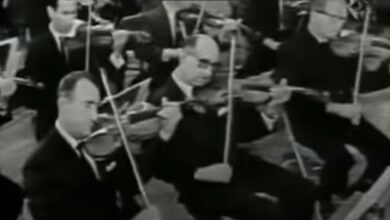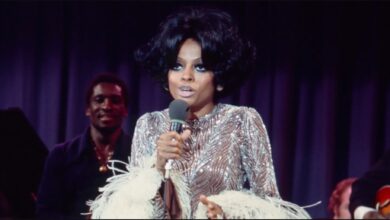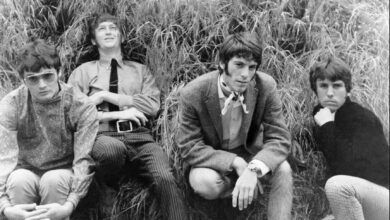Tommy Roe’s “Sweet Pea” Brings Bubblegum Pop to the Forefront and Captures Teen Spirit in 1966
In the summer of 1966, a bright, bouncy tune titled “Sweet Pea” by Tommy Roe lit up radios across America and helped define a new musical niche: bubblegum pop. With its irresistible hook, sunny melody, and cheeky innocence, “Sweet Pea” captured the carefree spirit of a generation coming of age in a rapidly changing world. The song climbed swiftly to No. 8 on the Billboard Hot 100 and became one of Roe’s signature hits, reaffirming his knack for crafting catchy, radio-friendly singles. In a decade dominated by British Invasion bands, folk-rock experimentation, and Motown’s rising power, Roe’s success with “Sweet Pea” stood out as a distinctly American phenomenon—unapologetically fun, light-hearted, and tailored for the youth market.
Tommy Roe hailed from Atlanta, Georgia, and came into the spotlight in the early 1960s with his debut hit “Sheila,” which bore a striking resemblance to Buddy Holly’s hiccupy vocal style. That single had gone all the way to No. 1 in 1962, launching Roe into the national spotlight and earning him the nickname “the father of bubblegum pop,” though the term itself wouldn’t be coined until a few years later. While many artists of the era were gravitating toward more serious lyrical content, Roe remained committed to creating danceable, upbeat tracks that spoke to young hearts and restless feet. His Southern roots gave him a subtle rockabilly undercurrent, but it was his pop sensibility—clear melodies, charming vocals, and memorable refrains—that truly set him apart.
The story behind “Sweet Pea” begins in a space of personal nostalgia and lighthearted affection. Roe wrote the song himself, inspired by a nickname he once gave to a girl he was fond of. The term “Sweet Pea” was meant to evoke both innocence and flirtation—a pet name that could double as a pop hook. Roe imagined the song not as a deep, emotional ballad but as a feel-good anthem that teenagers could sing along to while cruising with the top down or dancing at sock hops. That sense of uncomplicated charm is embedded in the lyrics, where the narrator pleads with his beloved Sweet Pea to get back on the dance floor and “do the twist” with him again.
The recording process took place in Los Angeles and featured Roe on vocals as well as guitar. It was produced by Steve Clark, who helped bring a clean, polished sound to the track that was in line with the pop sensibilities of the day. The instrumentation is tight and efficient: a jaunty electric guitar line, playful organ flourishes, hand claps, and a buoyant rhythm section that propels the tune forward with an irresistible energy. Roe’s vocals are relaxed yet enthusiastic, striking the perfect balance between teen cool and approachable warmth. At just over two minutes, “Sweet Pea” was designed to hit hard and fast—a slice of pure pop joy.
Upon its release in June 1966, “Sweet Pea” was met with immediate enthusiasm from radio stations and record buyers alike. The single began climbing the charts almost immediately and found a wide audience among younger listeners, particularly teenagers eager for a song that reflected their world more directly than the increasingly political or psychedelic turns in other musical genres. It spent several weeks in the Top 10 and earned Roe another gold record, proving that his appeal had not dimmed with the arrival of newer acts. In Canada, the song fared even better, reaching No. 1 on the RPM chart, underscoring its North American resonance.
Culturally, “Sweet Pea” arrived at a moment when pop music was splintering into various directions—some artists moving toward hard rock, others toward soul and R&B, and many diving into experimental territory. Roe’s song was a reminder that there was still a place for simplicity, for romance without angst, and for tunes that made you smile without needing interpretation. “Sweet Pea” didn’t challenge the status quo; instead, it offered a sunny escape from it. In doing so, it played a key role in solidifying bubblegum pop as a legitimate subgenre, paving the way for acts like The Archies and The 1910 Fruitgum Company.
For Roe himself, the success of “Sweet Pea” was more than just another chart hit—it reestablished his relevance in a fast-moving industry. Following a few quieter years after “Sheila,” Roe now found himself in demand again, particularly among teen audiences. He followed up “Sweet Pea” with another hit, “Hooray for Hazel,” which also broke into the Top 10 later that year. These successes led to a string of television appearances, national tours, and a renewed presence in the American pop scene, ensuring that he wasn’t just a one-hit wonder from the early ’60s.
The song’s influence was felt across the evolving pop landscape. It demonstrated that lightweight, infectious tunes still had strong commercial potential, especially when targeted at teen and preteen listeners. This helped convince record labels to invest in more artists who specialized in this feel-good style. Although the term “bubblegum pop” often carries a dismissive tone today, in 1966, “Sweet Pea” showcased how that sound could not only sell records but also carve out a joyful, danceable corner in an increasingly complex musical environment.
Over the years, “Sweet Pea” has been covered and referenced by various artists, though its particular charm often resists reinterpretation. The most notable tribute may be its use in film and television, where the song’s retro feel instantly evokes a sense of 1960s innocence. Whether in period pieces or nostalgic soundtracks, “Sweet Pea” often plays the role of mood-setter, capturing the breezy optimism of mid-’60s youth culture in just a few sunny bars.
In Roe’s personal and professional timeline, 1966 marked a creative high point. While his career would continue into the 1970s with modest success, it was “Sweet Pea” that truly defined his musical identity. During this period, he also enjoyed more control over his songwriting and image, working to blend his Southern roots with the changing tastes of a national audience. His clean-cut image, friendly stage presence, and refusal to take himself too seriously endeared him to fans who found comfort in his consistency during a volatile decade.
Decades later, “Sweet Pea” remains one of the most recognizable songs of its era. Its inclusion in numerous compilations and oldies playlists speaks to its enduring appeal, while its chart performance secures its place among the classics of 1960s pop. The song remains a go-to reference point for discussions of bubblegum pop’s origins and is often cited by music historians as one of the genre’s first major hits.
Beyond its musicality, “Sweet Pea” helped normalize the idea that not every pop song had to carry deep meaning or complex arrangements to be memorable. Its success reaffirmed the power of melody, accessibility, and emotional simplicity—elements that continue to drive pop music today. Roe’s work offered a different kind of contribution to the decade: not revolution, but joy. Not rebellion, but affection. And sometimes, that’s exactly what a generation needs.
Though Tommy Roe never reached the level of superstardom achieved by some of his contemporaries, his impact—especially through “Sweet Pea”—has been lasting. His role in shaping the direction of pop music during a pivotal time earns him a place in the broader story of 20th-century American music. In 2012, Roe was inducted into the Georgia Music Hall of Fame, a fitting honor for a hometown hero whose sound reached far beyond the South.
In the final measure, “Sweet Pea” endures because of its sincerity and charm. It’s a song that asks nothing of its listener but to enjoy the moment, to dance, to smile, and to remember a sweeter, simpler time. In a landscape often crowded with noise, “Sweet Pea” remains a breath of fresh air—proof that sometimes, a perfect little pop song can make a lasting impact.



